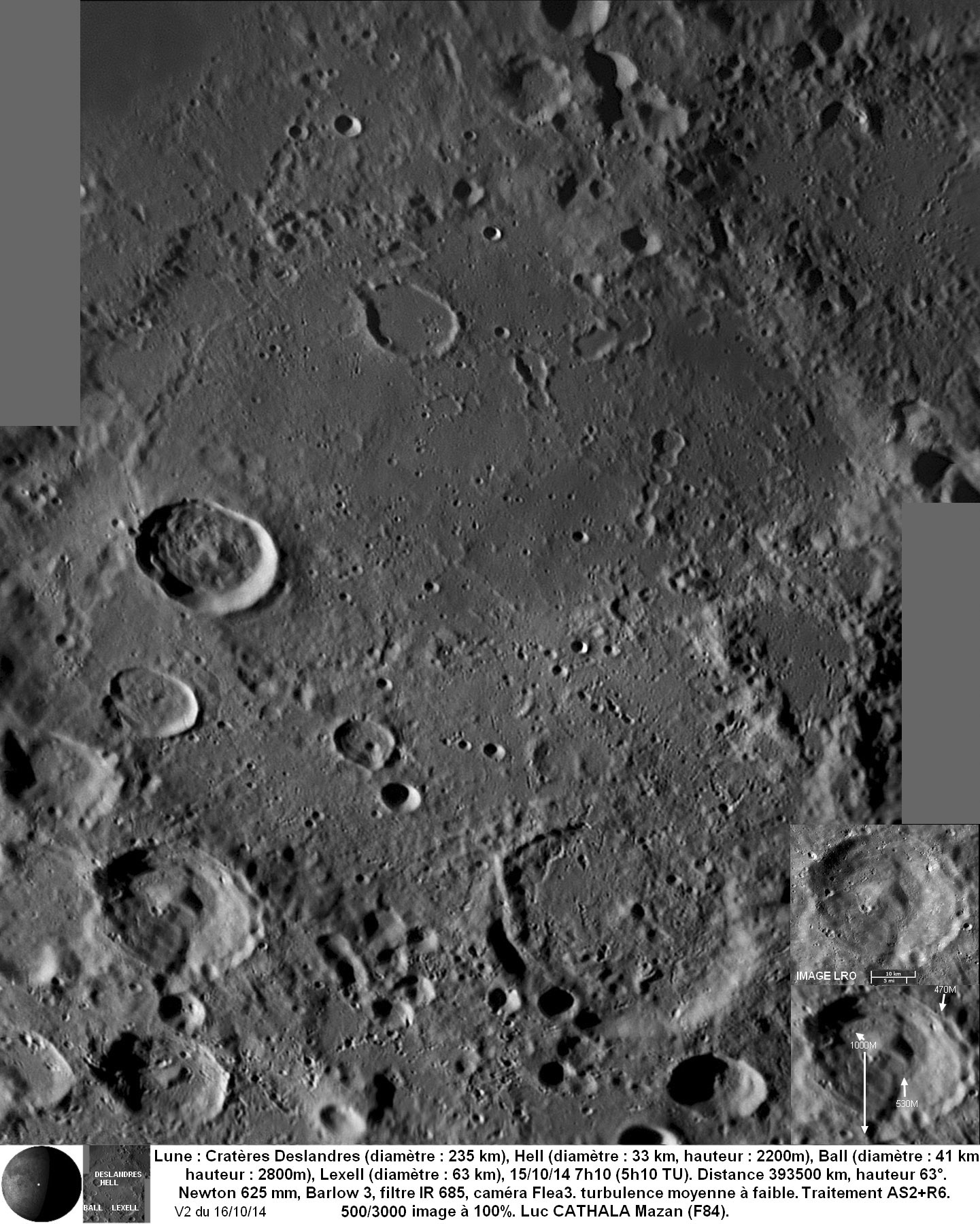Difference between revisions of "October 18, 2014"
| Line 3: | Line 3: | ||
<!-- ws:start:WikiTextHeadingRule:0:<h1> --> | <!-- ws:start:WikiTextHeadingRule:0:<h1> --> | ||
<!-- ws:start:WikiTextLocalImageRule:6:<img src="/file/view/LPOD-Oct18-14.jpg/527013412/LPOD-Oct18-14.jpg" alt="" title="" /> -->[[File:LPOD-Oct18-14.jpg|LPOD-Oct18-14.jpg]]<!-- ws:end:WikiTextLocalImageRule:6 --><br /> | <!-- ws:start:WikiTextLocalImageRule:6:<img src="/file/view/LPOD-Oct18-14.jpg/527013412/LPOD-Oct18-14.jpg" alt="" title="" /> -->[[File:LPOD-Oct18-14.jpg|LPOD-Oct18-14.jpg]]<!-- ws:end:WikiTextLocalImageRule:6 --><br /> | ||
| − | <em>image by [mailto:luccat@sfr.fr | + | <em>image by [mailto:luccat@sfr.fr Luc CATHALA], Vaucluse FRANCE</em><br /> |
<br /> | <br /> | ||
| − | Luc's grand image of Deslandres, or Hell Plain as it was once known, reminded me of my previous [http://www.lpod.org/archive/archive/2004/05/LPOD-2004-05-07.htm | + | Luc's grand image of Deslandres, or Hell Plain as it was once known, reminded me of my previous [http://www.lpod.org/archive/archive/2004/05/LPOD-2004-05-07.htm wonderment] if the large feature was actually a small multi-ring basin. With a diameter of 227 km it is quite a bit smaller than the Grimaldi (440 km) and even the Schiller-Zucchius (335 km) basins. But under some lighting there are hints of a remnant inner ring. Most [http://lpod.wikispaces.com/March+28,+2013 images] don't add much evidence to the inner ring guess, however there is another way that ancient basins are sometime revealed - they are deep. Deslandres itself is relatively shallow, and its central area is actually higher than many parts of its edges. Topographically there is no evidence that it is a two-ringer. But when you consider Clavius (231 km) and Lacus Mortis (159 km), being just a large crater is pretty good company to be in.<br /> |
<br /> | <br /> | ||
| − | <em>[mailto:tychocrater@yahoo.com | + | <em>[mailto:tychocrater@yahoo.com Chuck Wood]</em><br /> |
<br /> | <br /> | ||
<strong>Related Links</strong><br /> | <strong>Related Links</strong><br /> | ||
<em>[http://lpod.wikispaces.com/21st+Century+Atlas+of+the+Moon 21st Century Atlas]</em> chart 16.<br /> | <em>[http://lpod.wikispaces.com/21st+Century+Atlas+of+the+Moon 21st Century Atlas]</em> chart 16.<br /> | ||
| − | Luc's [http://www.astrobin.com/users/CATHALA.Luc.CATLUC/ | + | Luc's [http://www.astrobin.com/users/CATHALA.Luc.CATLUC/ website]<br /> |
<hr /> | <hr /> | ||
Revision as of 18:18, 11 January 2015
Big Plain

image by Luc CATHALA, Vaucluse FRANCE
Luc's grand image of Deslandres, or Hell Plain as it was once known, reminded me of my previous wonderment if the large feature was actually a small multi-ring basin. With a diameter of 227 km it is quite a bit smaller than the Grimaldi (440 km) and even the Schiller-Zucchius (335 km) basins. But under some lighting there are hints of a remnant inner ring. Most images don't add much evidence to the inner ring guess, however there is another way that ancient basins are sometime revealed - they are deep. Deslandres itself is relatively shallow, and its central area is actually higher than many parts of its edges. Topographically there is no evidence that it is a two-ringer. But when you consider Clavius (231 km) and Lacus Mortis (159 km), being just a large crater is pretty good company to be in.
Chuck Wood
Related Links
21st Century Atlas chart 16.
Luc's website



